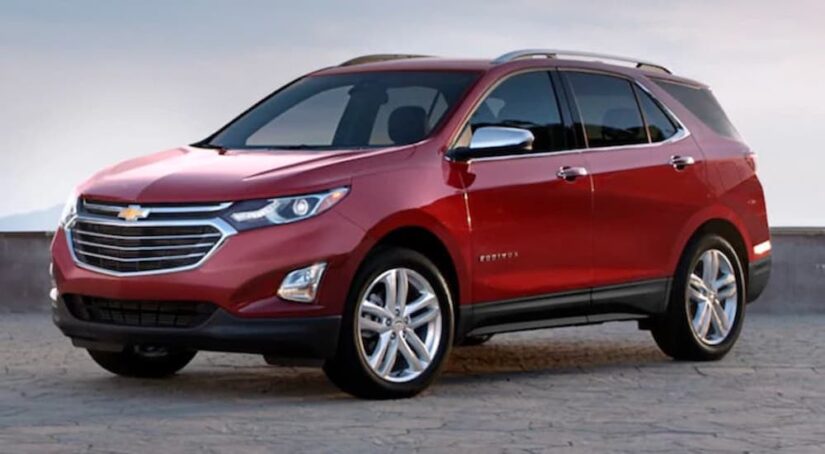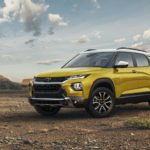When you’re in the market for a new ride, it’s easy to become frustrated when you see ads and commercials using terminology that seems vague or interchangeable. Even worse, it sometimes feels like different manufacturers have their own terms, which means you’re not quite sure what price to expect when walking into a dealership, nor are you positive if one manufacturer’s make matches another’s.
Today, I’m going to give you a hand in detailing the difference between a crossover and an SUV—two common terms too often misunderstood by consumers. At first glance, these terms do seem interchangeable, and indeed some people do use them interchangeably, but there is a concrete difference between a crossover’s structure and that of an SUV. Let’s say you are looking for a Chevy Equinox for sale; knowing its body type can affect your price expectations when you walk into a dealership. In this case, the Chevy Equinox is a crossover, which informs us already a bit about its structure, the circumstances in which it will excel on the road, and the situations in which you’d be better off with an SUV. Let’s dig a little deeper into the differences so that you can be as informed a consumer as possible.
What is a Crossover?
What makes these terms confusing is that some people refer to a crossover as a “crossover SUV,” or a “CUV” for short. This makes it sound like they are the same thing—but that’s absolutely not the case. Crossovers and SUVs serve different purposes, so purchasing the wrong one can have a negative impact on your driving life.
A crossover has a different structure to it than a regular SUV. A crossover vehicle is built with an underlying structure similar to that of a sedan. While the result may still look like an SUV, on the outside, the interior structure is also different, having been built as one big unit, as would a typical commuting vehicle. Since the resulting crossover tends to resemble an SUV, in size and shape, many people—even dealerships—use the SUV and crossover terms interchangeably. It’s an understandable tendency and likely not done out of malice. Still, it’s better that everyone is crystal clear on the differences so that consumers can have a full understanding of the vehicle they’re considering. An informed driver is a safe driver, and a safe driver is a happy driver.

Having been built like a small car, despite the mistakable size of an SUV, it’s easy to see the confusion where the crossover lies—hence the term “crossover,” belonging to both camps but accepted by neither. This is not to say that a crossover is just a mini-SUV or a large sedan; it is its own breed with its own unique traits. While more spacious than a sedan, it’s more nimble than your average SUV, so a crossover can be ideal for those who often drive busy roads but need the passenger space provided by a larger model. In other words, anyone who frequents an urban environment ought to take a serious look at a crossover at the time of their next purchase or upgrade. City streets tend to be narrower, especially when vehicles park on both sides of the road, so a crossover may be a city driver’s best bet. If we use the example of the Chevy Equinox again, the Equinox provides solid cargo space and room for the whole family while never being so large that urban driving is laborious.
Another advantage of the crossover is mileage. A crossover like the Equinox will more often than not net more miles to the gallon than its larger SUV contemporaries. The underlying sedan structure pays off at the pump. For anyone on a budget, a crossover is a solid long-term investment.
The structure of a crossover also makes it an ideal buy for anyone upgrading from a sedan. If you’ve been a lifelong sedan driver, going from a sedan to a crossover is a little less of an extreme change than going from a sedan right to an SUV. In short, don’t let the term “crossover SUV” fool you into thinking there are no differences. A crossover has its own quirks and its own advantages.
In That Case, What Then Is an SUV?
So, an SUV is generally larger than a crossover, but the most important difference once again comes down to structure: the SUV is built on a “body-on-frame” structure, in a manner similar to the manufacturing of a truck. This gives an SUV more hauling power and the ability to navigate terrain that sedans and crossovers might struggle with. Most SUVs come with four-wheel drive in order to deliver a wide range of terrain capabilities.
The SUV’s advantage, then, is it is less encumbered by location than a crossover. Crossover drivers will have to think twice before engaging in serious offroading or outbacking, but an SUV driver will be able to handle those tasks with little to no trouble. SUVs also tend to have more cargo space and more seating. For anyone who feels they’ll be carrying a significant amount of cargo or traveling with a ton of passengers, an SUV will edge out a crossover. A good point of comparison with the Equinox crossover is the Chevy Suburban and Silverado, both SUVs. They’re larger—perhaps not as ideal for city living, but noticeably more powerful. Due to an SUV’s additional weight, the mileage may be less appealing than a crossover’s. However, it’s worth noting that this is not always true: some SUVs are built with mileage and nimble navigation in mind.
SUVs entered the market before crossovers, so older vehicles of this ilk are more likely to be SUVs, but crossovers have been around in some form since 1980. In the past couple of decades, crossovers have become more popular, which means being knowledgeable about their differences is more imperative now than ever before.

What Does Knowing the Difference Mean for Me?
Knowing the difference between a crossover and an SUV can help you when you’re on the hunt for a new vehicle. First, consider your needs. Will you be deviating from established or paved roads? Will you want a vehicle that expertly capitalizes on mileage? Do you plan to do a lot of city traveling? What size vehicles are you accustomed to driving? Your answers to these questions will likely indicate whether you need a crossover or an SUV. If you find yourself still undecided, then the outcome will likely come down to appearance and feel. Do you want something sleek, or do you want something with heft?
Beyond just buying a new ride, knowing the difference can help as an owner. You are always better off knowing the details of your automobile when you go to the mechanic. Being an informed driver means you are less likely to be taken advantage of. It also means you know what your crossover or SUV is capable of; far too many accidents have occurred because the driver was ignorant of their vehicle’s true capabilities and limits. You can be in for a world of trouble if you’re unsure whether your ride can handle outbacking, fording a flooded road, or even hopping a curb, and then you throw caution to the wind and subject the whole family to your impetuous application of the scientific method.
Lastly, knowing the difference means you can speak intelligently about driving. Being a knowledgeable individual gives you some solid social capital. The next time your casual conversations steer toward your car or truck, you’ll be able to wow everyone by knowing the terms dealerships use. Before long, people may start asking you for advice on what ride best suits them. (Although, if you’re antisocial, you’ll want to keep this information to yourself.)
At the end of the day, only you can decide if a crossover or SUV is right for you. Now that you know the difference between the two, you will be able to make a more informed decision and have a more rewarding—and safer—life behind the wheel.



